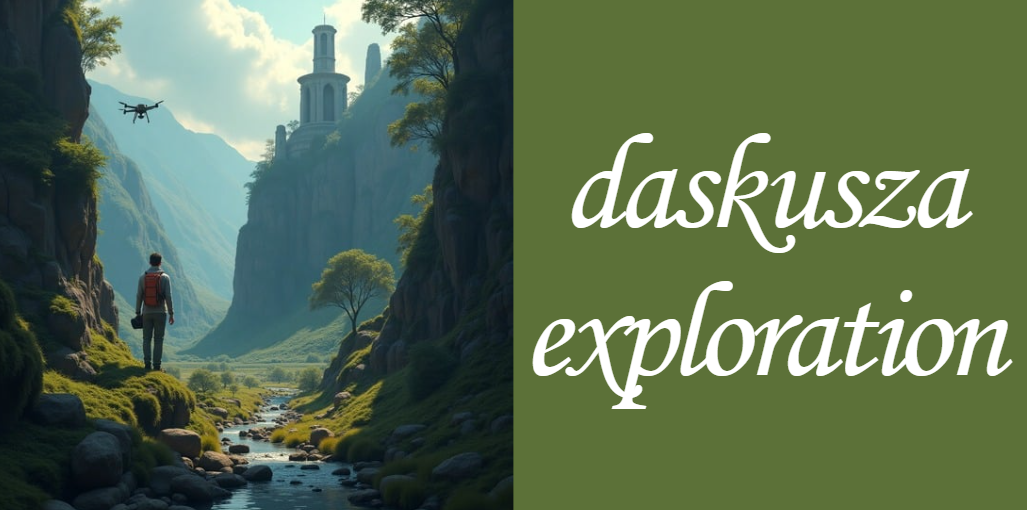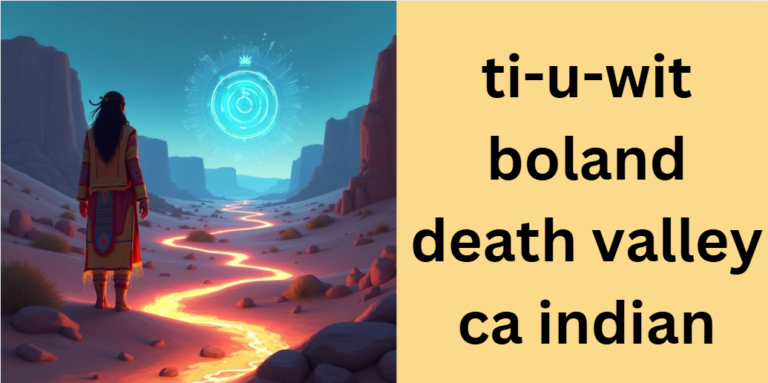The Ultimate Guide to daskusza exploration: Unveiling the Hidden Frontier
Daskusza exploration is more than a quest for physical locations; it embodies the spirit of discovery that merges ancient history with modern technology. Whether you are an adventurer seeking untouched landscapes or a digital explorer fascinated by virtual realms, this guide promises to provide you with a complete picture of what daskusza exploration entails.
In this article, we explore the origins, present-day dynamics, and future prospects of this intriguing subject. Readers will gain a unique understanding of how hidden histories and modern research converge to create a new frontier of exploration.
What Is daskusza exploration?
At its core, daskusza exploration is a term that captures the essence of venturing into territories that have remained elusive for centuries. The concept can be seen through various lenses:
- Geographical and Cultural: Traditionally, it refers to remote regions, possibly nestled in Eastern Europe or Central Asia, where ancient settlements, rich natural landscapes, and enduring cultural traditions converge.
- Scientific and Technological: In the realm of modern research, it encapsulates the use of innovative technologies such as drones, satellite mapping, and autonomous vehicles to study areas that were once inaccessible.
- Digital and Virtual: There is also a growing interpretation within online communities, where daskusza exploration reflects the journey of uncovering hidden narratives and experiences in virtual environments.
Historically, the term has evolved from ancient folklore and early explorers’ accounts to a modern-day beacon for both physical and digital discovery.
Historical Background and Origins
The history of daskusza exploration is steeped in myth, legend, and documented accounts of early expeditions. Ancient texts and folklore hint at lands that were once revered and shrouded in mystery. Early travelers recorded stories of vast, untamed regions rich in natural beauty and cultural heritage. These accounts, passed down through generations, laid the groundwork for modern interpretations.
The etymology of “daskusza” is particularly intriguing. Some scholars suggest that it originates from old Slavic or Eastern European languages, where it symbolized a gateway to hidden realms and ancient wisdom. This historical significance enriches the modern quest for daskusza exploration, bridging the gap between myth and reality.
Geographic and Ecological Overview
Understanding the geography of daskusza exploration involves diving into the specifics of terrain, climate, and ecological richness. Although the exact location remains debated among scholars and researchers, several characteristics are widely accepted:
- Location: The region is believed to span parts of Eastern Europe and Central Asia, marked by rugged terrain and scarce modern infrastructure. Satellite imagery and advanced mapping techniques have begun to reveal patterns in the landscape, suggesting the presence of ancient settlements and untouched ecosystems.
- Topography and Climate: The area is characterized by dense forests, alpine plateaus, cascading waterfalls, and serene valleys. Its climate, which ranges from temperate to extreme, contributes to a unique biodiversity that includes endemic species of flora and fauna.
Below is a sample table summarizing key geographical and ecological features:
| Feature | Description |
|---|---|
| Terrain | Rugged, with mountains, valleys, and dense forests |
| Climate | Varied—ranging from temperate to harsh, seasonal extremes |
| Biodiversity | Home to unique species, many of which are endemic |
| Historical Artifacts | Evidence of ancient settlements and cultural relics |
Cultural and Societal Impact
The impact of daskusza exploration extends beyond physical discovery into the realm of cultural and societal renewal. Indigenous communities have long inhabited these regions, preserving traditions that date back centuries. These local cultures contribute rich folklore, art, music, and oral histories that continue to influence modern interpretations.
In recent years, there has been a revival of interest in these cultural aspects. Festivals, heritage tours, and cultural exhibitions are now an integral part of daskusza exploration, celebrating the coexistence of traditional practices with contemporary lifestyles. This fusion not only enhances tourism but also fosters a deeper appreciation for the region’s multifaceted heritage.
Scientific and Technological Innovations
Modern daskusza exploration is driven by groundbreaking technological advancements. Researchers now have an array of tools that allow them to probe deeper into the hidden frontiers:
- Unmanned Aerial and Underwater Vehicles: These devices enable explorers to map high-risk zones, collect data, and capture high-resolution images from areas that are too dangerous or inaccessible for humans.
- Advanced Sensor Arrays and AI: Integrated sensor systems, paired with artificial intelligence, help in real-time data analysis, enabling detailed studies of geological formations, climate patterns, and biodiversity.
- Satellite Mapping: High-resolution satellite imagery has transformed our ability to document and understand the terrain, contributing significantly to the strategic planning of expeditions.
A diagram below illustrates the process of technological integration in daskusza exploration:
+-----------------------+
| Satellite Mapping |
+-----------+-----------+
|
V
+-----------------------+
| Drone & UAV Data |
+-----------+-----------+
|
V
+-----------------------+
| Integrated Sensor Array|
+-----------+-----------+
|
V
+-----------------------+
| AI & Machine Learning|
+-----------------------+
Digital and Virtual Explorations
Beyond the physical realm, daskusza exploration has found a new expression in the digital space. Virtual reality (VR) and augmented reality (AR) technologies allow users worldwide to experience the hidden treasures of this frontier without leaving their homes.
Digital communities and online platforms provide interactive tours, 3D maps, and user-generated content that further enrich the narrative of daskusza exploration.
For instance, online gaming communities and virtual art exhibitions often incorporate themes inspired by the mysteries of daskusza exploration, offering a unique blend of traditional storytelling and modern digital innovation.
Exploration Techniques: Then and Now
Exploration techniques have evolved significantly over time. Traditional methods—relying on basic navigational tools and manual surveys—have given way to modern, technology-driven approaches. Historical expeditions, while heroic, were limited by the lack of advanced equipment and real-time communication. Today’s explorers use sophisticated gear, including:
- High-resolution cameras and mapping software
- GPS systems and geospatial analytics
- Eco-friendly transport solutions designed for harsh environments
A sample equipment checklist for a modern expedition might include:
- Navigation Tools: GPS device, satellite phone, and compass.
- Safety Gear: Weather-resistant clothing, first-aid kit, and emergency supplies.
- Data Collection Devices: Drones, sensor arrays, and portable mapping tools.
Economic and Environmental Considerations
The potential economic benefits of daskusza exploration are significant, particularly if untapped natural resources such as rare minerals and geothermal energy are discovered. However, it is essential to balance economic pursuits with environmental stewardship.
Sustainable development and conservation efforts are key to ensuring that exploration does not lead to ecological degradation or cultural disruption.
A table comparing the economic benefits and environmental risks can help illustrate these considerations:
| Aspect | Economic Benefits | Environmental Risks |
|---|---|---|
| Resource Extraction | Access to rare minerals and energy resources | Risk of habitat destruction and pollution |
| Tourism and Heritage | Boosts local economies and cultural revival | Over-tourism and disruption of local traditions |
| Technological Advancements | Drives innovation and research funding | Potential misuse of technology in fragile ecosystems |
Case Studies and Success Stories
Several landmark expeditions have highlighted the promise of daskusza exploration. Notable success stories include:
- The Wieliczka Expedition: A journey led by a renowned explorer that uncovered artifacts and ancient ruins, offering insights into early cultural practices.
- Digital Mapping Initiatives: Projects that leveraged VR and AR to create immersive experiences, allowing a global audience to virtually traverse the region.
- Scientific Collaborations: International research missions that combined expertise in geology, ecology, and anthropology to document the region’s hidden wonders.
These case studies serve as valuable examples, offering lessons and inspiring future explorations.
Challenges and Risks
No exploration is without its challenges. Daskusza exploration faces several obstacles:
- Geographical and Logistical: Rugged terrain, extreme weather, and isolated regions make physical access difficult. Communication challenges and data management in remote areas further complicate efforts.
- Ethical and Cultural: There is a risk of cultural insensitivity or exploitation of indigenous communities. Environmental degradation is also a significant concern if exploration is not conducted sustainably.
Responsible exploration requires careful planning, adherence to ethical guidelines, and ongoing dialogue with local communities.
Future Prospects and Research Directions
Looking ahead, the future of daskusza exploration is promising, driven by emerging technologies and global collaborations. Researchers are developing even more advanced tools, such as:
- Next-generation drones with enhanced endurance.
- Improved AI systems for real-time data interpretation.
- Eco-engineered transport solutions that minimize environmental impact.
Experts predict that with continued innovation and sustainable practices, daskusza exploration will unlock new scientific discoveries and cultural insights, contributing significantly to our understanding of untouched frontiers.
How to Get Involved: A Practical Guide
For those inspired to contribute to daskusza exploration, there are many opportunities available. Educational institutions offer specialized programs and fellowships in fields related to geography, archaeology, and environmental science. Workshops and community groups provide hands-on experiences and practical training.
Here is a brief guide on how you can get involved:
- Educational Resources: Enroll in courses or online classes that focus on exploration, remote sensing, or cultural studies.
- Volunteer and Research Programs: Join expeditions or research initiatives led by universities and conservation organizations.
- Community Engagement: Connect with local groups and digital communities to stay updated on the latest developments and contribute your insights.
Frequently Asked Questions (FAQs)
What new technologies are currently shaping the future of daskusza exploration?
Recent developments such as enhanced drone endurance, real-time data analytics using edge computing, and improved sensor miniaturization are opening new avenues for discovery. These technologies allow for unprecedented precision in mapping and environmental monitoring, paving the way for more comprehensive research in previously unreachable areas.
How is digital storytelling influencing public perception of daskusza exploration?
Digital storytelling, through interactive VR experiences and immersive 3D reconstructions, is making the hidden frontier accessible to a global audience. This new approach encourages engagement by allowing people to virtually experience the mystery and beauty of the terrain, fostering a broader appreciation for its historical and environmental significance.
What environmental policies are influencing the approach to daskusza exploration?
Strict environmental policies and international conservation guidelines now play a crucial role in shaping expedition strategies. Researchers and explorers are increasingly integrating sustainable practices and seeking governmental and NGO partnerships to ensure that new discoveries do not compromise fragile ecosystems or disrupt local heritage.
How do international research collaborations enhance daskusza exploration?
Global partnerships bring together diverse expertise from geologists, ecologists, cultural historians, and technologists. These collaborations result in a multidisciplinary approach that enriches research outcomes by integrating various perspectives, methodologies, and innovative tools that are crucial for unlocking the region’s mysteries.
Are there any planned future expeditions dedicated solely to uncovering the secrets of daskusza exploration?
Yes, several research institutions and exploration groups are in the planning phase for dedicated expeditions. These upcoming projects aim to further leverage technological advancements and cross-border collaborations to delve deeper into the region’s untapped resources and cultural heritage, promising even more groundbreaking discoveries in the near future.
Conclusion
In summary, daskusza exploration represents a groundbreaking convergence of history, technology, and cultural discovery. This guide has provided an in-depth look at its origins, geographical significance, scientific innovations, and future prospects.
By blending traditional knowledge with modern advancements, daskusza exploration not only enriches our understanding of hidden frontiers but also sets a new standard for responsible and sustainable discovery.
The journey into this hidden realm is both challenging and inspiring. Whether you are a seasoned explorer or a curious newcomer, embracing the spirit of daskusza exploration offers a unique opportunity to contribute to a legacy of discovery and innovation.
Read more
Ultimate Guide to accordshort insights: In-Depth Analysis, Trends, and Strategies
Ultimate Guide to insights from tatasec.org – Comprehensive Financial, Business, and Tech Strategies
The Ultimate In-Depth Guide to abithelp tablets – Benefits, Ingredients, Usage, and More
General News LogicalShout: The Ultimate Guide to a Smarter News Experience






